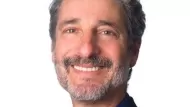Planners are often involved in social equity analysis. How issues are defined and measured can affect what seems fair and just. Consider, for example, the fairness of toilet access.

Social equity refers to fairness or justice. This is important for planners because public policy decisions often affect the distribution of benefits and costs. As most planners know from personal experience, people frequently respond viscerally if they feel treated unfairly.
Planners often provide analysis for decisions with social equity impacts. Equity analysis is challenging because there are often many possible ways to define and measure impacts and groups. How this is done can significantly affect outcomes. Measured one way, a particular policy seems fair and reasonable, measured another way, it seems unjust and cruel. Generally, our job is to identify all possible perspectives to help decision-makers and stakeholders understand the full range of equity impacts.
A good example is potty parity, that is, the fairness of toilet access. Women often have inferior toilet access – they must travel farther or wait longer to find one available. Several factors can contribute to this:
- Women sit to urinate, and often wear more complicated clothing, which takes more time.
- Women menstruate.
- Women often care for children and seniors, who require assistance.
- A larger portion of women are seniors who require more time.
- Men’s washrooms can accommodate more users since urinals require about half as much area as a toilet stall.
- Men can sometimes pee discreetly outdoors.
As a result, women typically spend about twice as much time in washrooms as men, so it is generally unfair to simply allocate equal amounts of floor area to men’s and women’s washrooms. Doing so seems egalitarian (everybody is treated the same), but fails to account for different needs and abilities.
One way to address this problem is to make women’s washrooms larger or more numerous. Some jurisdictions require two women's toilet stalls for each men's, but a better approach responds to each location’s specific needs. For example, if a building has about the same number of women and men during peak periods, it women’s washrooms should have about twice as much floor area as men’s. However, if there are twice as many men, the washrooms should be equal size, and if there are twice as many women, women’s washrooms should be about four times larger.
This illustrates how different analysis approaches can lead to very different conclusions as to what is fair and appropriate. Floor area is an input (what you put into the system) while toilet access is an outcome (what ultimately occurs). Equity analysis is generally concerned with outcomes, so those are the better impacts to measure. In this case, an appropriate metric is the average minutes that different groups must wait to find a suitable washroom available.
Another approach is to provide individual, gender-neutral washrooms, preferably private cubicals each with its own toilet, sink and hand dryer. Although these may require somewhat more space than a shared washroom, they eliminate the inefficiency and inequity of women or men waiting while there are unused toilets available to the other gender. This solution is increasingly common in new construction, and can often be implemented in existing buildings. For example, a restaurant that currently has "Women's" and "Men's" rooms can simply change both signs to say "Washrooms." This increases efficiency—it makes every toilet available to everybody, and helps solve current debates over who should use which washroom. Many designers now embrace this approach.

This is a planning issue because zoning codes often mandate separate men's and women's washrooms and dictate the minimum number of toilets required. The International Building Code (IBC) provides minimum toilet supply formulas that determine when separate facilities are required for men and women, and female to male ratios. Separate facilities are typically required if a building has more than 15 occupants, and generally assumes that these will have an equal number of toilets unless there is a compelling reason otherwise.
Change is slow. Only in 2012 did New York City allow restaurants and coffee shops with up to 30 customers to provide two unisex rather than gender-specific toilets. I suspect that many other jurisdictions are ready to rethink and reform these policies. Planners can play an important role by helping decision-makers and the general public explore ways to make public policies related to toilets more equitable.
Let me mention a different but related issue. We recently installed in our house, state-of-art Japanese toilet seats, which, at the push of a button, washes your posterior with warm water and dries it with warm air. It’s a little shocking at first, but soon becomes normal, and I suspect that most people, especially those who are older or have physical disabilities, will learn to appreciate this new hygiene technology. These toilets require a nearby electric plug. Development policies should encourage builders to install these in new construction in anticipation of future needs.


Maui's Vacation Rental Debate Turns Ugly
Verbal attacks, misinformation campaigns and fistfights plague a high-stakes debate to convert thousands of vacation rentals into long-term housing.

Planetizen Federal Action Tracker
A weekly monitor of how Trump’s orders and actions are impacting planners and planning in America.

In Urban Planning, AI Prompting Could be the New Design Thinking
Creativity has long been key to great urban design. What if we see AI as our new creative partner?

King County Supportive Housing Program Offers Hope for Unhoused Residents
The county is taking a ‘Housing First’ approach that prioritizes getting people into housing, then offering wraparound supportive services.

Researchers Use AI to Get Clearer Picture of US Housing
Analysts are using artificial intelligence to supercharge their research by allowing them to comb through data faster. Though these AI tools can be error prone, they save time and housing researchers are optimistic about the future.

Making Shared Micromobility More Inclusive
Cities and shared mobility system operators can do more to include people with disabilities in planning and operations, per a new report.
Urban Design for Planners 1: Software Tools
This six-course series explores essential urban design concepts using open source software and equips planners with the tools they need to participate fully in the urban design process.
Planning for Universal Design
Learn the tools for implementing Universal Design in planning regulations.
planning NEXT
Appalachian Highlands Housing Partners
Mpact (founded as Rail~Volution)
City of Camden Redevelopment Agency
City of Astoria
City of Portland
City of Laramie






























